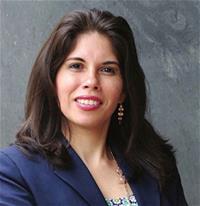Q&A About Depression

Answers from Natalia Ortiz, MD, a liaison and consultation psychiatrist from Philadelphia:
Why is depression under-reported in older adults?
“First, there is a stigma. Second, it has a tendency to present with a lot of physical symptoms. Some people might not recognize it since they think it is part of ‘normal aging.’
Sometimes patients say ‘oh, this is part of my thyroid disease.’ Or ‘it’s part of my heart disease.’ But depression is not part of normal aging. It’s a reversable condition that, if treated, will help the quality of life of the patient and will help independence.
What are red flags for physicians to spot depression?
Let’s say a person has lost a significant other. When we lose a significant other, we go through bereavement – and that’s not (by itself) depression. But losing your friends, a sense of community, starting to or deteriorating, physical pain, isolation – those are the things that are red flags.
If they don’t get screened in time, they can suffer quietly. One of the things that happens when you’re depressed is you don’t want to bother people. You don’t want to be a burden to people. You keep everything to yourself.
How can physicians talk with patients they suspect have depression?
“The most difficult part is how to have this conversation in a respectful way.
“Say you’re a primary care physician and the patient comes to the office for the yearly visit. Part of what a physician can say is: ‘We’re going to make sure you’re healthy in all aspects. We have screened you for diabetes, high blood pressure. We are managing your, for example, thyroid disease. Now I’d like to ask you a few questions about how you are doing emotionally. How you are doing as a human being.”